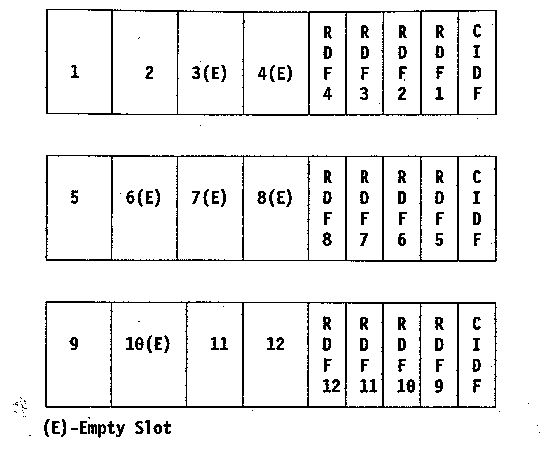 z/OS DFSMS Using Data Sets
z/OS DFSMS Using Data Sets
 z/OS DFSMS Using Data Sets
z/OS DFSMS Using Data Sets
|
Previous topic |
Next topic |
Contents |
Contact z/OS |
Library |
PDF
Fixed-Length Relative-Record Data Sets z/OS DFSMS Using Data Sets SC23-6855-00 |
|||||||||||||||||||
|
A fixed-length RRDS consists of several fixed-length slots. A fixed-length RRDS is defined using NUMBERED and a RECORDSIZE whose average and maximum lengths are the same. Each slot has a unique relative record number, and the slots are sequenced by ascending relative record number. Each record occupies a slot and is stored and retrieved by the relative record number of that slot. The position of a data record is fixed; its relative record number cannot change. A fixed-length RRDS cannot have a prime index or an alternate index. Because the slot can either contain data or be empty, a data record can be inserted or deleted without affecting the position of other data records in the fixed-length RRDS. The record definition field (RDF) shows whether the slot is occupied or empty. Free space is not provided in a fixed-length RRDS because the entire data set is divided into fixed-length slots. In a fixed-length RRDS, each control interval contains the same
number of slots. The number of slots is determined by the control
interval size and the record length. Figure 1 shows the
structure of a fixed-length RRDS after adding a few records. Each
slot has a relative record number and an RDF. Table 1 shows
the access options available for RRDS processing.
Figure 1. Fixed-length
relative-record data set
 Table 1 lists the operations and types of access
for processing fixed-length RRDSs.



|
 Copyright IBM Corporation 1990, 2014 Copyright IBM Corporation 1990, 2014 |